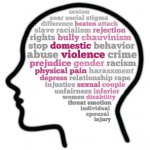The Price We Pay
I have spent the last few years watching in awe as increasing numbers of young people have taken up the cause of racial violence and demanded change, determined to move mountains with the force of their collective will.
For AAPIs in my generation, however, outrage gives way to exhaustion.
The comedian Hasan Minhaj, who was born in California of Muslim Indian parents, captures the generational difference eloquently. He relates a story of vandals who threw a brick through the window of his dad’s car, following a threatening phone call.10 His father, Najme Minhaj, responded by calmly picking up a broom and sweeping up the shattered glass.
The son was outraged and demanded to know how the father could not feel outrage as well. The father replied, “These things happen, and these things will continue to happen. This is the price we pay for being here.”
Hasan Minaj calls it the American Dream Tax: You endure some racism, and if it doesn’t cost you your life, you pay it.
Asians may be targeted, in part, because we are unlikely to complain about anti-AAPI violence. We smile, we shrug our shoulders, and we sweep up the broken glass. This reticence may be due, in part, to the following:
- Language barriers: Non-native Asian Americans who are fluent in English may still struggle with idioms or have a non-native accent that may not receive the warmest welcome; and
- Distrust of government: Many Asian immigrants come from countries where the government—and law enforcement—is best avoided. This leads to a reluctance to report crimes, even when they are the victims.
This sinister silence, however, minimizes the true impact of these events. By refusing to write ourselves into the narrative, we perpetuate stereotypes that make it easier to single out AAPIs for the violence that has become more commonplace.
Beyond Outrage
This issue is relevant to the AAPI community, but how is it relevant to us, as clinicians and health professionals?
At first, I didn’t think it was. But then I listened to Rochelle.
Racial & ethnic minorities have been disproportionately affected by COVID-19. Asian Americans are 53% more likely to die of COVID-19 than white Americans. … Native Americans & Alaskan Natives are 26% more likely to die; Hispanic Americans are 16% more likely to die. These differences cannot be explained by genetics alone.
Rochelle P. Walensky, MD, MPH, was a senior resident in my program when I was an intern. Many of you know her better as the director of the Centers for Disease Control and Prevention. On Apr. 8, 2021, she released a statement declaring that racism is a health threat:11
What we know is this: Racism is a serious public health threat that directly affects the well-being of Americans. As a result, it affects the health of our entire nation. Racism is not just the discrimination against one group based on the color of their skin or their race or ethnicity, but the structural barriers that impact racial and ethnic groups differently to influence where a person lives, where they work, where their children play, and where they worship and gather in community. These social determinants of health have lifelong negative effects on the mental and physical health of individuals in communities of color.
Racial and ethnic minorities have been disproportionately affected by COVID-19. Asian Americans are 53% more likely to die of COVID-19 than white Americans, even after controlling for age and sex. Black Americans are 37% more likely to die; Native Americans and Alaskan Natives are 26% more likely to die; Hispanic Americans are 16% more likely to die.12 These differences cannot be explained by genetics alone.
After I heard Dr. Walensky speak, I started to look around. In the U.S., Asians represent 17.1% of all physicians, 8.3% of all nurses, 15.3% of all physical therapists, 22.7% of all pharmacists, 5.3% of all healthcare administrators, and 33.7% of all rheumatology fellows. We are you. Our problems are your problems. And we are hurting.
So what can you do? First, don’t be outraged. Outrage is a cheap thrill. If you are truly outraged, then act on that emotion.
You can demonstrate your support for the AAPI community through a range of actions, from patronizing Asian-owned businesses to offering to escort an Asian friend who fears for her safety. I know Asian women who refuse to take public transportation because they are afraid of literally being thrown on the tracks. I wish I could say this is a ridiculous concern, but after watching report after report of Asians—particularly women and the elderly—being targeted on public transportation, it’s impossible to dismiss this concern as merely theoretical.13
Also, if you see something, say something. A witness or a bystander may be more comfortable reporting a hate crime than the actual victim.
Finally—and this may be hardest of all—I’ll ask you to give up the language that makes it easy to identify Asians as other. A kerfuffle in Congress arose over a decision to stop publishing some Dr. Seuss books that used racist imagery, including the depiction of Asians as yellow-skinned, coolie-hat-wearing, smiling folk.14 Although some bemoan the loss of these books to political correctness, the Dr. Seuss illustrations, The Simpsons’ character Apu, the tomahawk chop, Aunt Jemima and Uncle Ben are all examples of language and images that may seem harmless, but actually perpetuate stereotypes that make it easier for minorities to be targeted.
Seeing Asian Americans as different from other Americans made it easier for President Franklin D. Roosevelt to issue Executive Order 9066 at the start of World War II.15 This executive order was used to strip almost 80,000 Japanese American citizens of their rights and their lands. These were people who were born in the U.S. People like me.
Along with 30,000 Japanese who had immigrated to the U.S., these 80,000 American citizens were forcibly incarcerated in detention camps. These American citizens and residents were deemed a security threat based on their race alone.
For those of you who believe this is ancient history attributable to the fog of war, I would mention that the U.S. Supreme Court decision that supported the internment of Asian Americans, Korematsu v. United States, has been rebuked but not overturned.16 In the past, I assumed that if a Korematsu-like case came before the Supreme Court, the outcome would be assured. Now, I’m not so sure.
For those of who do not face these issues on a regular basis, I realize this may be a lot to absorb. So I will leave you with one last piece of advice. The chief residents at my institution came up with a motto when they realized their interns were paralyzed by complexity: Don’t just watch the patient be sick. Do something. If it doesn’t work, do something else. But at least try.
Don’t just shut the door.


